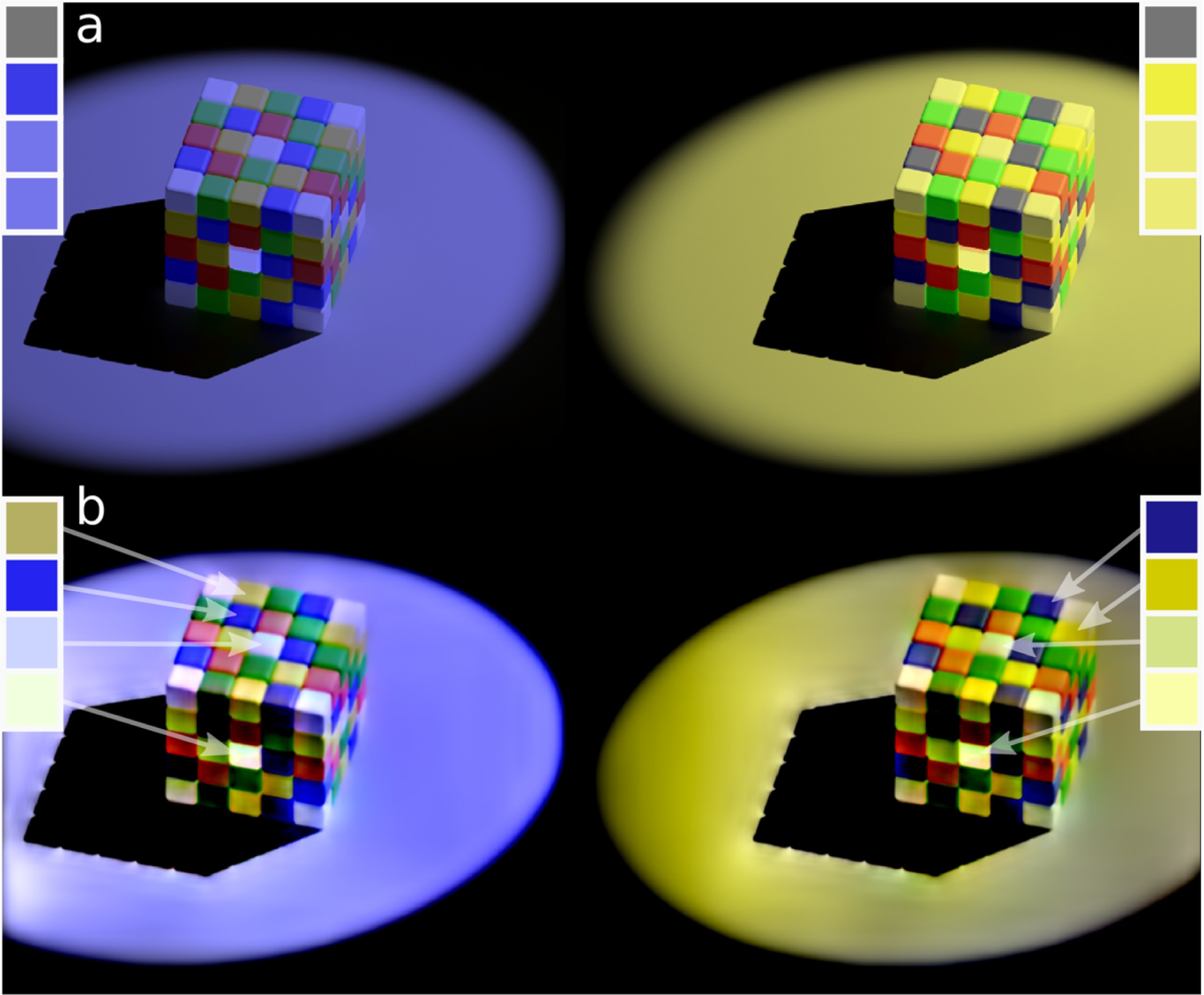Published on
Updated
Reading 2 mins.
How are optical illusions formed? According to the results of a study conducted by British scientists, it is our eyes – rather than our brains – that are actually playing tricks on us.
White and gold or black and blue? If you are a fan of social networks, you could not miss the debate on the color of the famous dress, a few years ago. If some swear to see it white and gold, others do not budge and judge it to be black and blue. How to explain this optical illusion and in general, all the different perceptions that we can have of the same object?
Different perceptions related to our eyes
“Visual illusions happen all the time in the real world, and change the way things look. I wanted to model these illusions“Explains first of all Jolyon Troscianko, specialist in environmental ecology at the University of Exeter, in the United Kingdom.

The blue squares on the yellow-tinted side (right) and the yellow squares on the blue-tinted side (left) are physically the same gray (colors are shown in the squares at the top of the image).
Jolyon Troscianko’s team therefore decided to model the simplest theory: the one that situates visual illusions at eye level. Specifically, the scientists wanted to model how a color change in the background changes the perceived color of an object. “For example, if you darken the surroundings of an object slightly, it will appear lighter than the same object nearby on the original background. By making its surroundings even darker, the object will appear darker.” adds the scientist.
The transmission rate of neurons responsible for color perception
According to the results of this work, it is the limited transmission speed of neurons that could affect our perception of colors. By studying the saturation of neurons, the model helps to understand how visual illusions are formed, “for example, natural scenes have contrasts greater than 10,000:1, but our neurons can only process contrasts of 10:1″ details the scientist.
The information, to reach the brain, must therefore be compressed, which leads to defects and an optical illusion. “We no longer need to attribute all of these visual phenomena to complex psychological-level processing. That’s not to say that these higher-level processes can’t affect our vision at all.” concludes Jolyon Troscianko.
